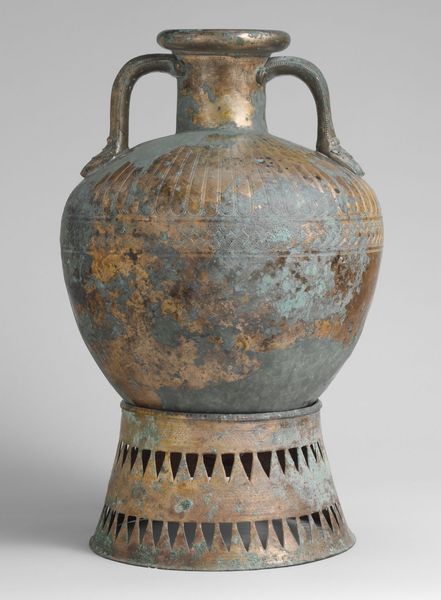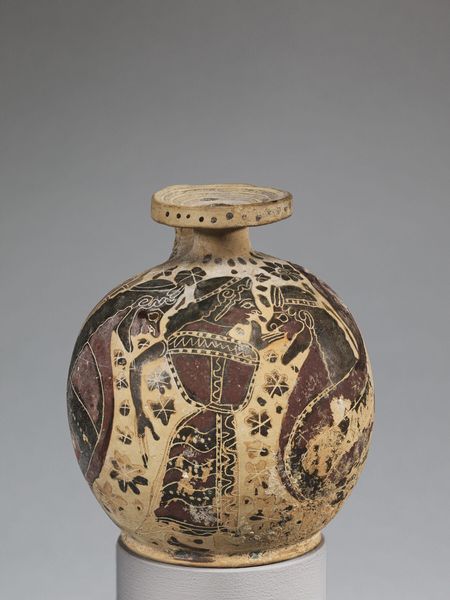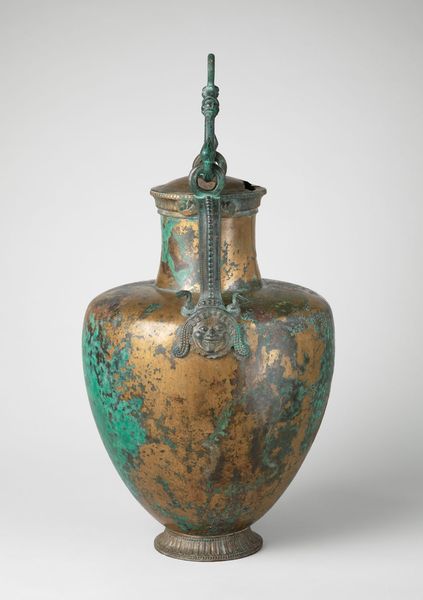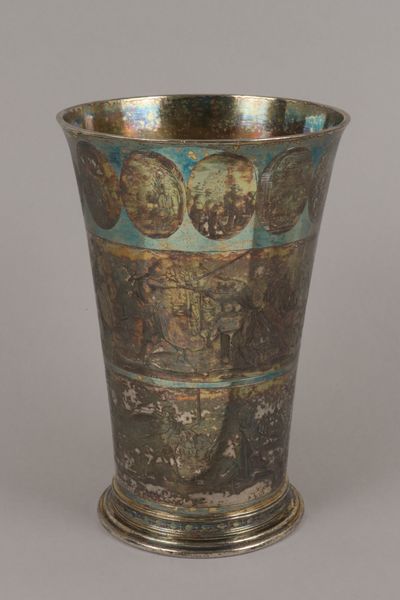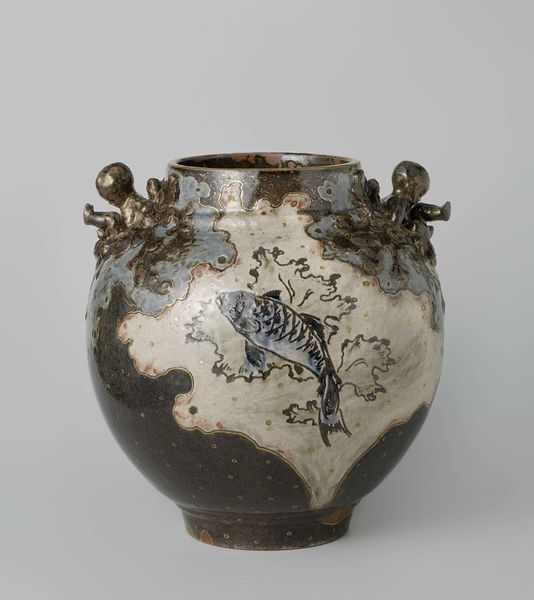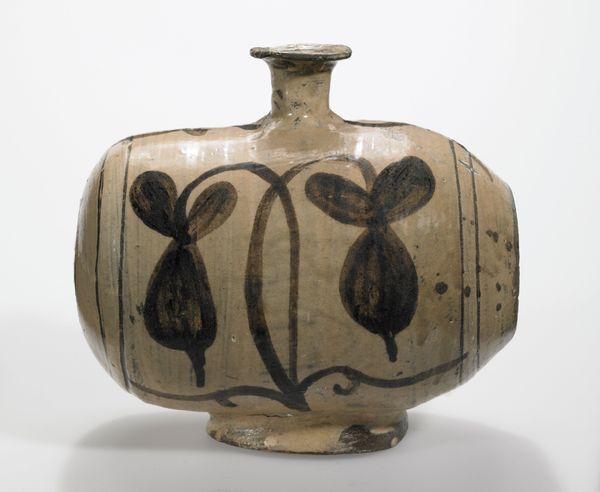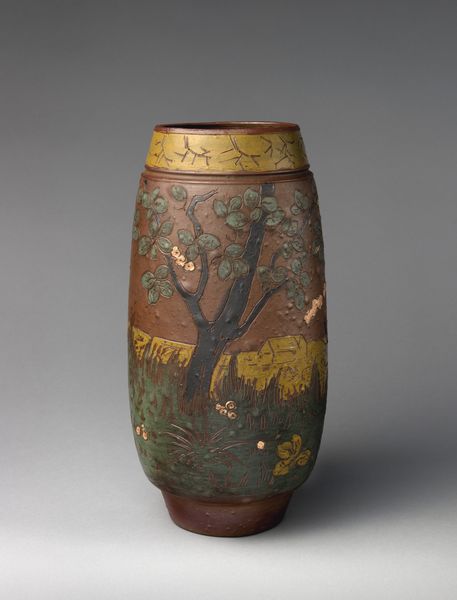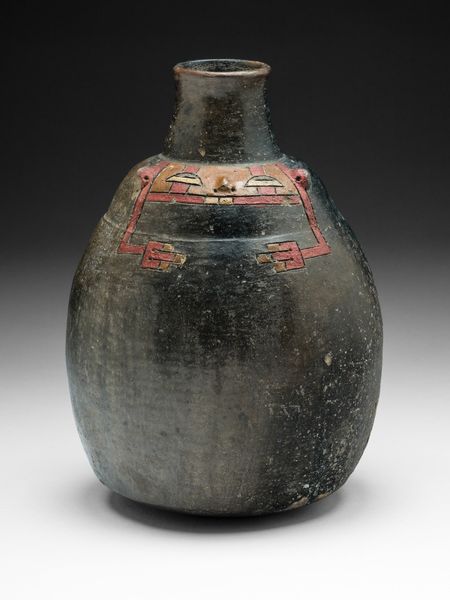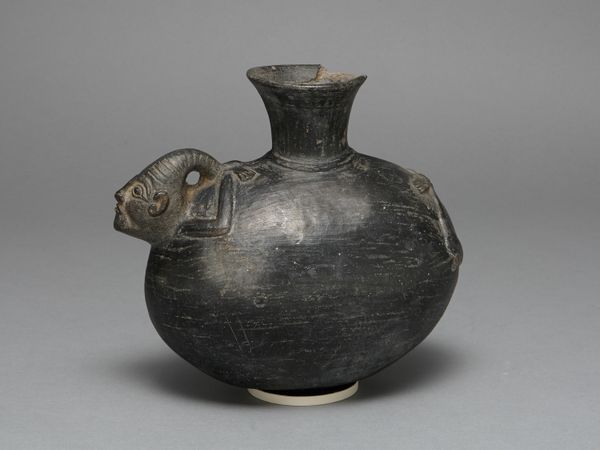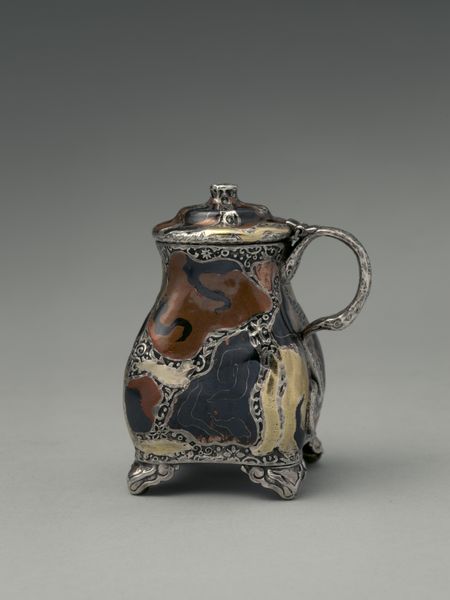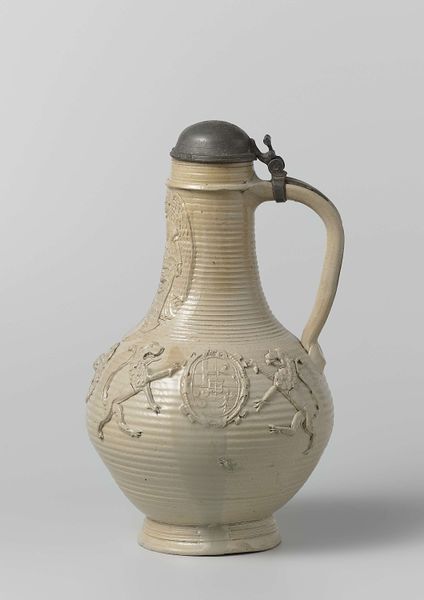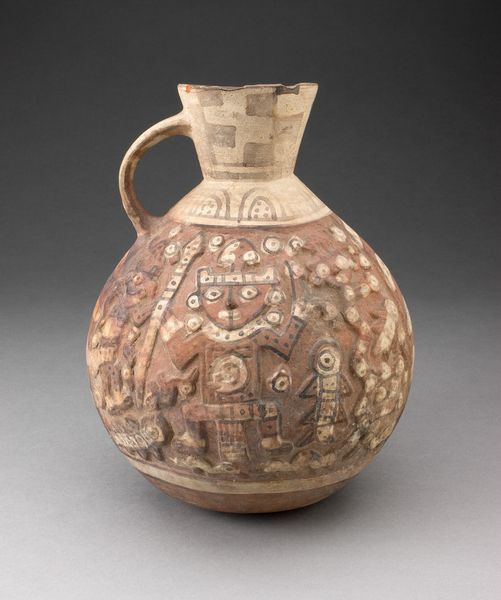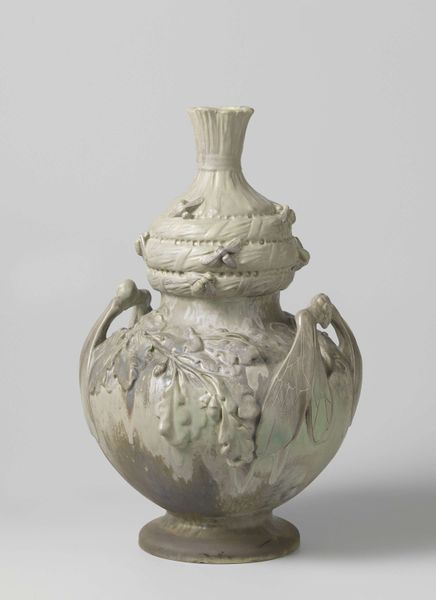
Dimensions: object: 400 x 345 x 330 mm, 9 kg
Copyright: © Grayson Perry | CC-BY-NC-ND 4.0 DEED, Photo: Tate
Curator: Grayson Perry's ceramic vase, "My Gods," presents a compelling narrative through its layered imagery and form. I'm immediately struck by the almost grotesque quality of the figures. Editor: Almost? The expressions are intense, bordering on caricature, especially the wide-eyed woman on the right. Note how the artist uses line and form to amplify emotion. Curator: The vase as a medium is fascinating here. Perry deliberately uses what is often considered a craft material to elevate personal stories, social commentary, and perhaps even the banality of consumer culture. Editor: The earthiness of the ceramic contrasts beautifully with the complexity of the drawings and textures etched into its surface. Semiotically, the vessel itself becomes a symbol of containment, of the personal narratives held within. Curator: It really challenges our understanding of what fine art is and the role of labor in its creation. The artist's hand is so evident in every etched line. Editor: Indeed, and the juxtaposition of the earthy vase with the refined, almost classical drawing style creates a visual tension that keeps drawing me in. It's a rewarding viewing experience. Curator: Yes, thinking about the piece in terms of the artist's process and material choices has shifted my perception. Editor: Precisely. It is through careful attention to form and its many layers that we unlock deeper meanings.
Comments
Join the conversation
Join millions of artists and users on Artera today and experience the ultimate creative platform.
tate 4 months ago
⋮
My Gods 1994 is a ceramic vase by the British artist Grayson Perry that depicts four large figures, each presented in their own white vignette set within the green glaze of the vase’s surface. These characters each represent one of the four ‘Gods’ referred to in the title. One of them is labelled ‘Doreen, the god of cleanliness and vengeance’, who strangles a small, pale-skinned boy wearing a t-shirt that reads ‘childhood ends in divorce’, reaching out her serpent’s tongue towards him while holding a spray can labelled ‘anal: things have to be clean’. The second female god is unnamed, but takes the form of a dominatrix with hair fanned outward, resembling the head of Medusa. Blood falls from her lips, and there are wounds and drips of blood on the face of a small male companion whom she holds. The man on the motorcycle, whose penis penetrates the machine he rides, is labelled Luigi, the ‘god of quiet machismo’. The fourth of Perry’s gods, ‘Alan, the god of imagination’, provides a retreat from the violence of the others depicted: here, a contented child sits reading upon the deity’s knee. This god’s clothes are printed with images of nature and behind him is a pleasant-looking house in a country landscape. Decorative patterns cover the green-glazed surface between the four vignettes featuring the gods. On one side a corkscrew floats between a black knotted symbol and the words ‘My Gods’ that are carved into the vase’s face. A three-dimensional hand reaches out towards the viewer, a face moulded into each of its fingertips, and further along the vase protrudes a creature with a man’s body and the head of a teddy bear, wearing a bra and spreading his body outwards in a shape reminiscent of a crucified Christ. Symbols litter the work’s surface, including Chinese-style motifs and a band of tiny Nazi swastikas around the vase’s base. My Gods is only slightly larger than a standard domestic vase and as such the viewer must stand close to the work in order to see the detailed imagery that it displays.
